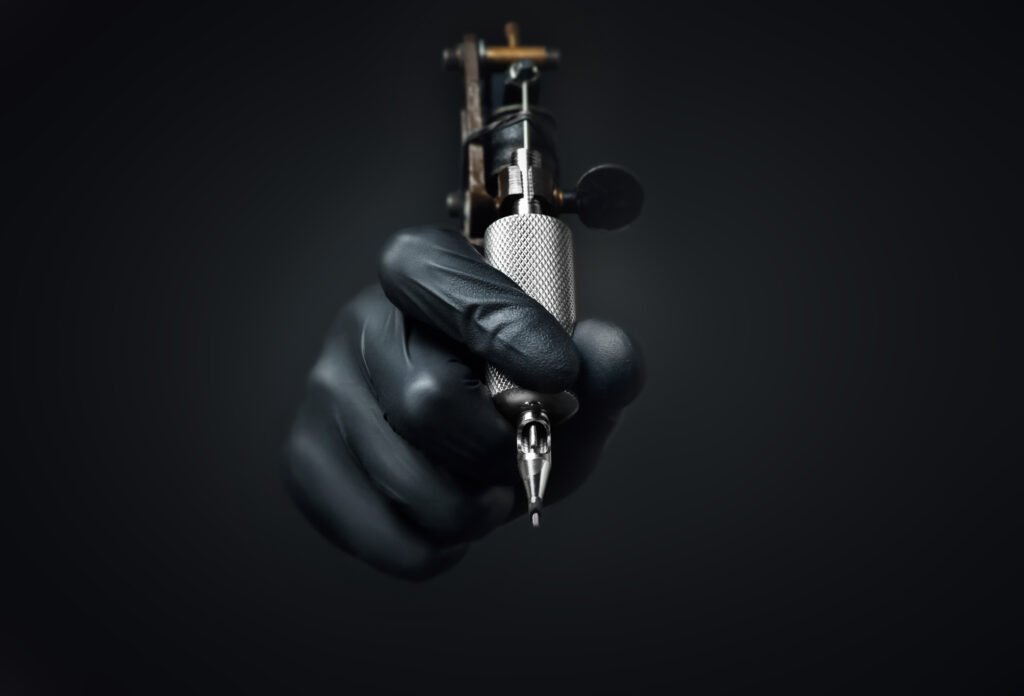
Tattoos have become increasingly popular, with exceeding amounts of people from all sectors showing their ink. In America alone, 145 million people have tattoos, 70% of which have more than one. Tattoos have made their way through several ancient eras, countries, tribes and religions, many signifying cultural traditions. While today, tattoos may still hold cultural meaning for individuals and families, people feel free to get whatever images and script they please. Before one books a tattoo artist, however, or attempts to give themselves or their friends tattoos with their own gun, it’s important to understand the equipment used; in this case, tattoo machines. (1) (2)
- Origins of tattoo machines
Walker Tattoo machines have obviously progressed over the years, as technology and resources have improved—shifting in styles and materials. It is important to understand where they first started in order to appreciate where they are now. One of the earliest tattoo equipment findings, bone chisels, dated back to 3000 B.C. and were used by the Maori people to decorate warriors’ skin. Bronze Egyptian tattoo needles were also discovered dating back to 1450 B.C.
Various resources were used in ancient times, from bone and bronze to bamboo needles and shells. The process was quite different, as well. Before electrical tattoo machines were invented, tattoos relied solely upon the motion and precision of one’s hand, and were performed in varying techniques. (3) (4)
These techniques included:
- Cutting and scratching: In ancient Maori traditions, bone chisels were dipped into ink and used to carve intricate patterns into the skin. If the receiver could not withstand the pain, he’d be considered weak and cowardly.
- Piercing: This technique involves continuously penetrating the skin with light amounts of force. The ancient Japanese used several needles attached to one device to pierce pigment into the flesh at high speed.
- Puncturing: This is slightly different and requires more energy; using a long rod rather than needles or chisels. (3) (4)
- Different types of modern tattoo machines
In comparison to ancient methods, modern tattoo machines rely less on the manual movement of the hand and more on electromagnetic mechanisms. The combination of coils, springs, an armature bar and a capacitor, enable a current to run through the machine and regulate the needles into the skin.
There are many types of tattoo machines available that may alter slightly in comparison to the electric variety, each with its own purpose—including:
- Magnetic coil machine: These affordable machines are well known for that classic tattoo buzzing sound, and work as explained above. They are extremely powerful and quite heavy. Therefore, in order to achieve a consistent tattoo, and to avoid causing any damage to the client’s body, it is essential for artists to take extra care.
- Pneumatic machine: Pneumatic machines are only about twenty years old, and rely upon an air compressor to guide the needles. They are popular due to their lightweight nature and the ability to maintain and clean them easily. Depending on what sort of air compressor you have, they can also be used remotely. They can, however, be expensive and loud.
- Rotar motored machine: These machines are considered to be gentler on the skin due to their use of a spinning (electric) motor, rather than coils. They tend to be easier to operate and quieter.
- Liner machine: These machines are used to create single solid lines in one go.
- Shader machine: These machines are used for shading purposes, and are also kinder to the skin. (5) (6) (7)
- Potential risks of tattoo machines
Getting an unfortunate-looking tattoo that you later regret is not the only threat. It’s important to consider the potential risks that tattoo machines may pose if incorrectly used, or applied to a sensitive area. Whether self-tattooing or undergoing a professional tattoo, you must ensure that the equipment used is sterilized. If you do not properly clean your materials, use the same needles and tubes as someone else, or fail to wear gloves, you (or the person who you’re tattooing) may be at risk of the following:
- Skin irritation (rashes and eczema): May not always display straight away
- Infections such as Staphylococcus Aureus
- Burning sensation
- Swollen/inflamed tissue (Granuloma’s nodules)
- Diseases such as hepatitis and HIV
- Scar tissue (8) (9) (10)
- Benefits of a professional artist
Whilst you can legally tattoo yourself and/or others following the correct regulations—depending on your state, seeking out a professional tattoo artist may prove beneficial and ultimately safer in the long run.
Benefits may include:
- Appropriate licensing and requirements
- Appropriate skill set and expertise
- Health and safety knowledge
- Correct regulations and guidelines
- Properly sterilized equipment
- Aftercare advice
- Efficient disposal of compromised materials (9)
Final thoughts
The tattooing process has always been a fascinating one. From ancient methods to modern-day techniques, it’s no surprise that their popularity is ever-growing. The tattoo machines, themselves, range from purpose and price to effectiveness and consideration. Each works slightly different to the next, depending on what your overall goal is as an artist, so don’t be afraid to re-consult this article if you’re ever on the hunt for the right machine.



